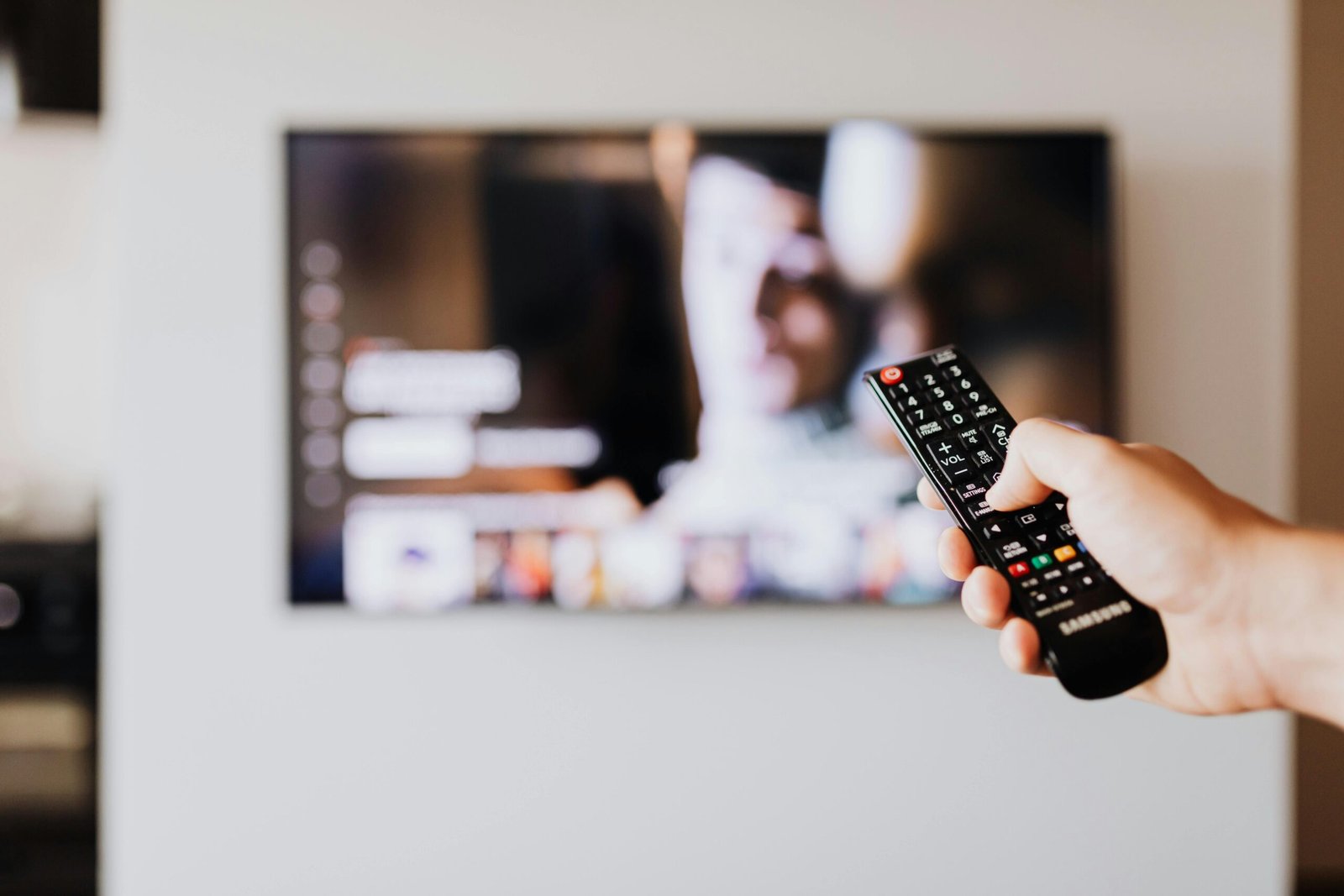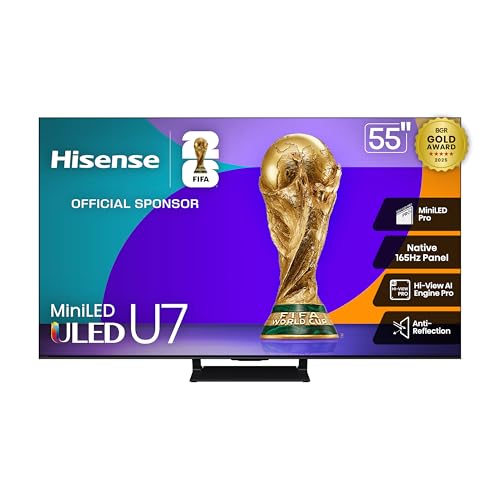If you’re shopping for a new TV in 2025, you’re probably drowning in specs, buzzwords, and promises of “cinematic brilliance.” Every brand says their screen is the smartest, brightest, or most “immersive.” Truth is, not all upgrades are worth it.
This guide cuts through the noise. You’ll see which TVs actually deliver the goods, what features make a real difference, and how to find one that fits your life—not just your living room.
The Smart TV Landscape in 2025
Let’s start with the basics. TVs this year are brighter, faster, and a lot smarter than what we had just a few years ago. The new processors can adjust color, brightness, and motion on the fly. Apps load almost instantly. Voice control feels smoother.
Brands like Samsung, LG, and Sony keep pushing display quality, while TCL and Hisense are proving that you don’t have to spend thousands for a great experience. Some systems like Google TV still get a little bloated with recommendations, but overall, navigation feels cleaner and more intuitive.
If you haven’t upgraded since before the pandemic, even a midrange 2025 model will blow your mind.
Top Smart TVs of 2025: Best Picks for Every Budget
Picking the right TV isn’t just about numbers. It’s about how it feels when you sit down, hit play, and lose yourself in a show. Here are the standout models that hit the sweet spot between tech, performance, and price.
Samsung S95D OLED – The Premium Standard
The Samsung S95D OLED is the kind of TV that makes you say wow before the opening credits finish. With brightness topping 1,600 nits and perfect pixel-level dimming, it handles both dark movie nights and sunny living rooms like a pro.
Games look ridiculous in the best way—fluid, sharp, and fast—thanks to its 120–144Hz refresh rate. The Tizen system is clean, fast, and doesn’t crash mid-stream (looking at you, older Google TV sets).
At around $2,400, it’s expensive, no doubt. But if you care about picture quality, this one earns every dollar.
LG C4 OLED – The All-Around Favorite
The LG C4 OLED is what most people should buy. It nails the balance between price, performance, and polish. LG’s Alpha 10 processor boosts brightness, sharpens edges, and smooths motion beautifully.
Gamers will love it. It supports 120–144Hz, HDMI 2.1, and both Nvidia G-Sync and AMD FreeSync, which means zero lag and silky visuals.
At about $1,297, it’s not cheap, but it’s the kind of TV you’ll still be proud of three years later. The sound’s average, but with a decent soundbar, it turns into a legit home theater setup.
Sony Bravia X90L 2025 – The Movie Lover’s Pick
If you’re the type who watches Blade Runner 2049 just to appreciate lighting, get the Sony Bravia X90L. Sony’s Cognitive XR processor brings out details that most TVs miss—the glow on a skyline, the shadows under someone’s eyes, the flicker of a candle.
It’s a full-array LED with peak brightness of around 1,300 nits, and it handles motion like a dream. Sports, action scenes, slow pans—it all feels cinematic.
The price sits near $1,700, which stings a little, but you’re paying for craftsmanship. This isn’t a screen; it’s an experience.
TCL QM72025 – The Midrange Powerhouse
The TCL QM72025 feels like cheating the system. For about $799, you get Mini LED Pro brightness, Variable Refresh Rate (VRR), and Auto Low Latency Mode (ALLM)—all the gamer buzzwords that actually matter.
It’s fast, colorful, and comes loaded with Google TV, which gives you every streaming app you could want. Sure, the interface sometimes feels crowded, but it’s worth it for the performance you get at this price.
If you’ve ever thought, “I want something that just works,” this is it.
Hisense U7N Series 2025 – The Budget Hero
The Hisense U7N is for anyone who wants solid 4K without spending more than a grand. It’s got Mini LED tech, a 120Hz refresh rate, and better brightness than you’d expect for a TV under $700.
You won’t get perfect black levels or deep contrast like OLED, but the picture still pops. It’s great for streaming, sports, or background TV while you’re making dinner. Simple, reliable, and easy to set up—no fuss required.
Summary: Finding the Right Fit
Here’s how to think about it:
- Want the best of the best? Go Samsung or Sony.
- Need high-end performance that won’t drain your wallet? LG’s C4 is your move.
- Want real value? TCL’s your guy.
- On a budget but still want 4K? Hisense delivers.
Every model here has a purpose. Pick the one that fits your routine, not just your room size.
How to Choose the Right Smart TV for You
Display Type
OLED gives you perfect blacks. QLED wins on brightness. LED gets you solid quality at a better price. You’ll know which one fits once you see them side by side in person.
Refresh Rate and Gaming
If you play fast-paced games or watch sports, 120Hz is your friend. Anything higher is a bonus. Look for HDMI 2.1—it’s what lets your console or PC really stretch its legs.
Smart Platform
Tizen, webOS, Google TV—they all work fine. The real difference is preference. Some are snappier, some are prettier. Make sure it supports your must-have apps like Netflix, Hulu, or Prime Video.
Sound and Connections
Most TVs don’t sound amazing out of the box. Plan on adding a soundbar with Dolby Atmos if you want that deep movie-night rumble. And check that it’s got enough HDMI ports for your gear.
Price and Value Breakdown
Here’s how pricing shakes out this year:
- Premium ($1,700–$2,400): The clearest images, the sleekest builds, and the kind of performance that makes friends jealous.
- Midrange ($800–$1,300): The best mix of features for the price.
- Budget (Under $700): Great for everyday use or smaller rooms.
Spend what makes sense, but don’t cheap out just to save a couple hundred. The better panels last longer and save you headaches down the line.
The Bottom Line
2025’s smart TVs are next-level. You get more brightness, smarter tech, and faster everything. Whether you want the deep blacks of OLED, the pop of QLED, or the affordability of LED, there’s something made for you.
At the end of the day, it’s about what makes your shows and games look the way you want them to. The perfect TV doesn’t exist—it’s the one that feels right when you sit down and hit play.
FAQs
What are the best smart TVs in 2025?
Top picks are the Samsung S95D OLED, Sony Bravia X90L, LG C4 OLED, and TCL QM72025. They all balance power, design, and price.
How do OLED, QLED, and 4K compare?
OLED gives you true blacks. QLED gives you wild brightness and color. 4K just means resolution—3840×2160 pixels. They’re not the same thing.
What features should I look for?
Aim for HDMI 2.1, at least 120Hz refresh rate, HDR support, and a clean smart platform. Those make the biggest difference.
What’s the price range for premium TVs?
Premium models run between $1,300 and $2,400. You’re paying for stronger brightness, faster processors, and better panels.
What trends define 2025 TVs?
Expect insane brightness, smarter processors, fewer reflections, and better AI-driven picture tuning. TVs are getting good at thinking for themselves.





